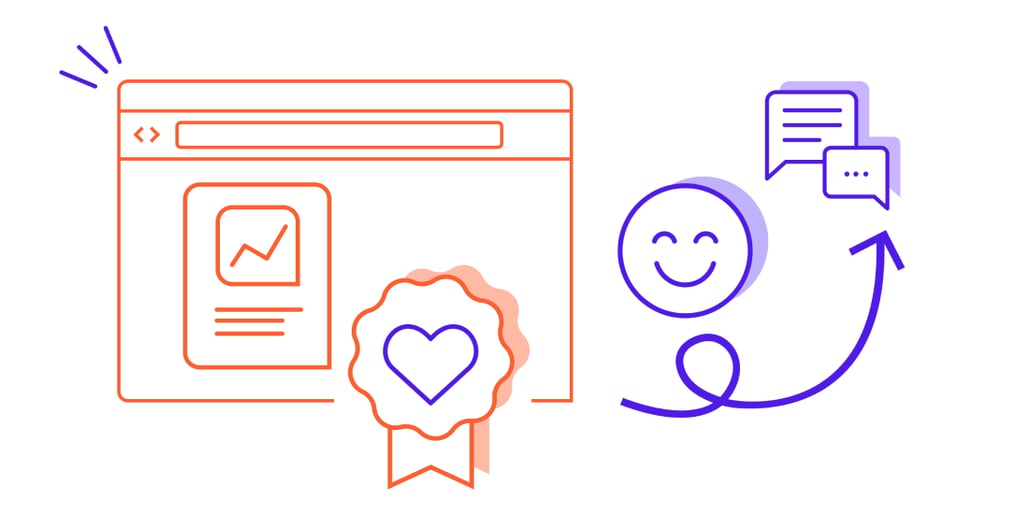
Intranets have long been a tried-and-true part of organizations ecosystems. Now, customisation is expanding the possibilities and benefits of using intranet infrastructure.
New tools to facilitate work and communication are continually flooding the market. But when it comes to offering a transformative digital employee experience, it takes a more powerful technology – one that can be adapted and personalised to the unique needs of its users and the organisation.
Topics:
Why choose a custom-built intranet?
Four benefits of using a customised intranet
Intranet feature customisations that make a difference for employees
A user-centric approach to the digital employee experience: the key to impactful customisation
Organizational readiness for custom intranet design and development
Typical intranet design challenges
Collaboration with a custom intranet development company
Why choose a custom-built intranet?
Despite the potential of customised intranets, many enterprise companies still rely on traditional and rigid, out-of-the-box intranet options to manage their operations and internal communications.
Too often, this comes at the expense of the digital employee experience. Clunky interfaces and outdated design are par for the course when organisations haven’t updated or customised their company intranets to keep up with the times.
For many companies, employee experience in the digital workplace has been pushed to the back burner.
This doesn’t have to be the case. The benefits of intranets are still relevant for businesses. The mistake is to expect an out-of-the-box solution to meet the complex and evolving needs of an entire organisation.
Leveraging intranet technology
Modern, custom-built intranets can – and do – have a role in improving employee experience. And in a changing landscape where hybrid and remote work are increasing, a modern and streamlined intranet solution is one of the strongest tools for companies to engage with their employees and unlock growth and efficiency.
For most enterprise organizations – particularly those with high-security requirements, significant geographic distribution, and diverse stakeholder groups – an intranet is already a key part of the information and operational ecosystem. As companies increasingly move their operational activities online, centralized information and internal communications become more important than ever.
Dedicated solutions to stay innovative
Many companies outgrow the tools that once met their needs, and their efficiency starts to suffer. Others find that their technology has gone out of date and they are losing their competitive edge in attracting talent. But it’s not too late for companies to stay current and provide their employees with a digital workspace that will help them keep up with the ever-changing demands of their work. Already, 53% of survey respondents say that supporting digital efforts is a top priority.

Stock solutions, like Microsoft SharePoint intranets, might be the first stage for small and medium-sized enterprises. But off-the-shelf features fall short for corporations and institutions with hundreds, if not thousands, of employees and users. Today, businesses need to craft a digital employee experience that will optimise for satisfaction, boost productivity, and increase engagement. To do that, you need dedicated software solutions: an intranet designed for you.
Four benefits of using a customised intranet
The possibilities and advantages of custom intranets are constantly growing. No longer just for information storage, a well-designed intranet can offer significant benefits:
1. It serves as a ‘source of truth’ for each employee
Whether for critical bulletins, company-wide messaging, or brand-building employee engagement, an intranet is often the sole channel for internal communications. The average information worker spends nearly 20% of their time searching for internal information, which amounts to almost a full working day each week. This makes it even more vital to build employee trust that they will see the content and updates that are most relevant to them.
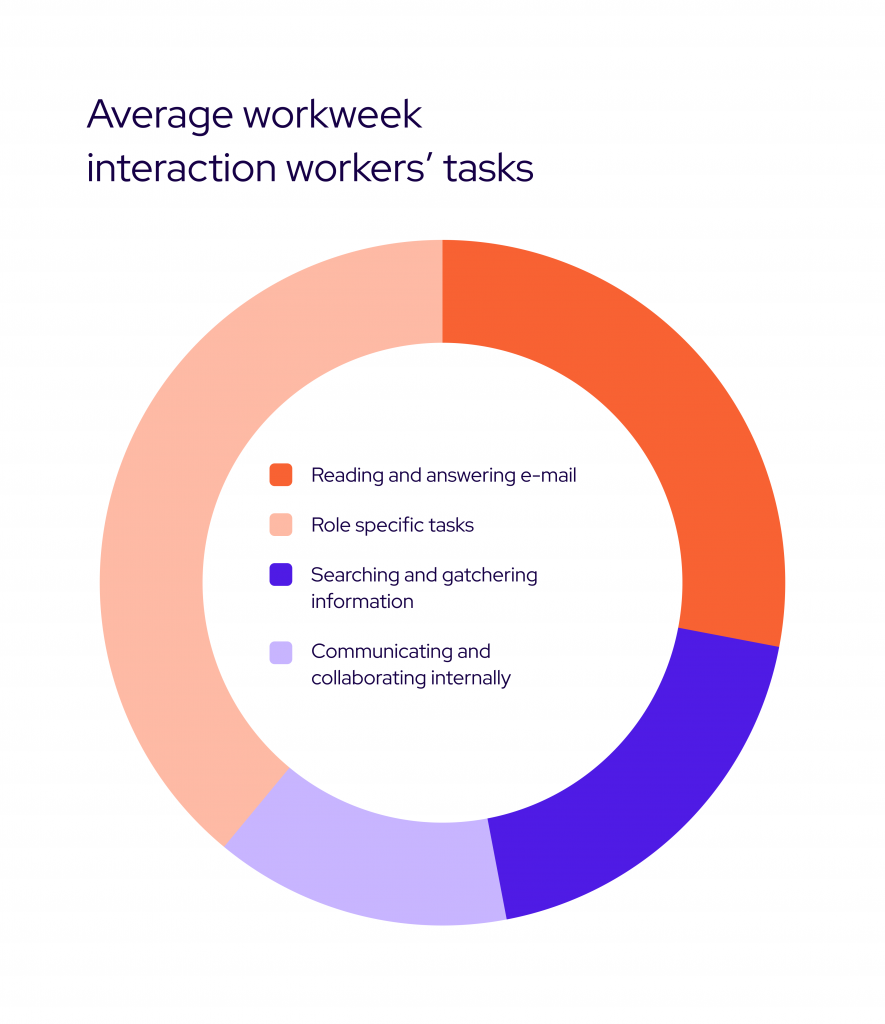
A customised intranet homepage can highlight information targeted to employees based on their function and location. A robust knowledge base stocked with documentation is useful but may not be intuitive for some users; customisation allows employees to be presented with key resources targeted to their roles and needs. Or, integrating a people directory and searchable organisational chart makes it simpler for each employee to find the information they need.
2. It enables remote work
Many large organisations that hadn’t previously considered remote work or hybrid working models are now embracing and even prioritising it. This is only achievable and sustainable in the long term, however, if they can offer digital workspaces that replicate the most important functions of in-person spaces.
According to recent research, more than 75% of employees want to work from home at least one day per week. That means that employees need a virtual platform where they can access the right resources, keep up with relevant company developments, and connect with colleagues – just as they would in person.

A digital workplace needs to reflect how employees really work within the context of their specific organisation, department, and function. By bringing together a cohesive set of integrated tools, personalised UX, and social communication channels, a customised intranet makes this kind of digital workplace a reality.
3. It supports communication and engagement
The data is clear: social technologies are an important way to support communication. Tailor-made intranets offer features like real-time chat functionality, embedded social platforms, and social engagement mechanisms. Features like these have positive downstream organisational effects.
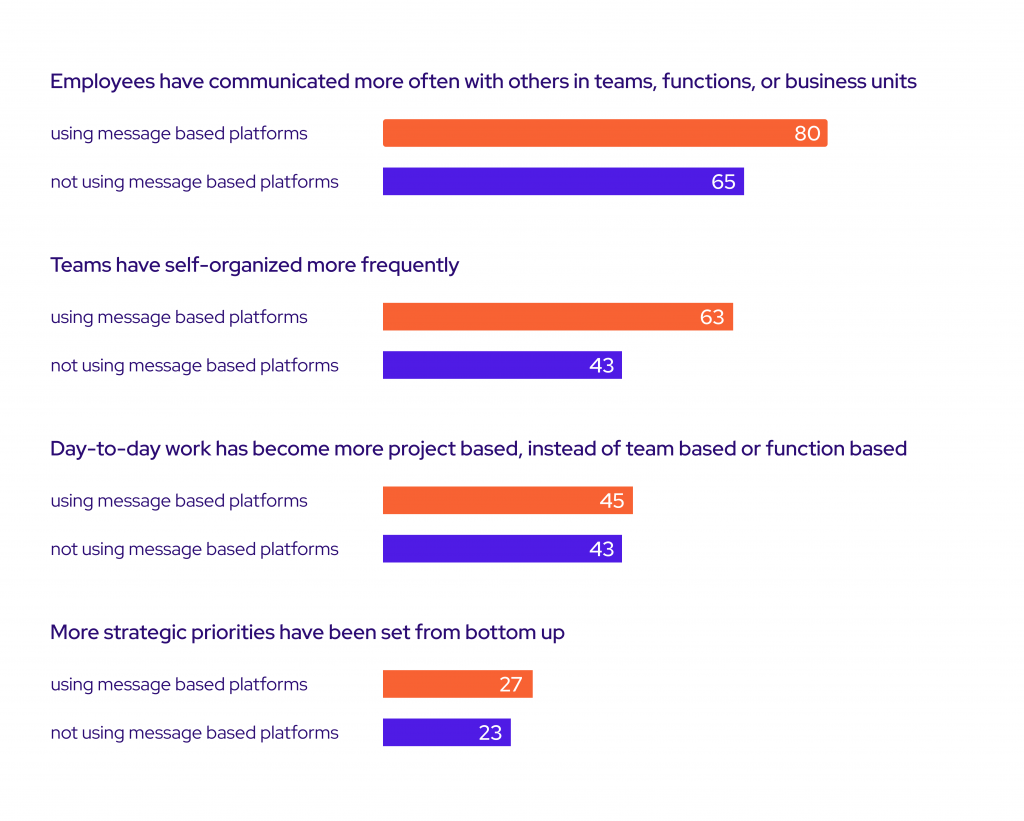
For example, employees can access live chat help from the HR or IT departments, comment on or react to blog content, share information with colleagues, or save content for future reference. Not only can these features foster communication and interactions between colleagues, but they establish a clear feedback loop between employees and business leaders. Social engagement features provide a “pulse check” for employee satisfaction. This is already useful on a day-to-day basis. For change management, crisis responses, or other sensitive messaging, it becomes invaluable.
Read also: 7 Trends in Intranet Design for 2022
4. It improves the digital employee experience overall
Knowing where to turn for clear information, being able to access key resources on-demand, having the opportunity to work remotely, and feeling connected to colleagues and organisational leaders are positive outcomes for employees. Only 13% of people are fully satisfied with their employee experience [Gartner], but this can change.
Unclear information, missing resources, and a lack of interaction with company-wide initiatives may have left employees uninformed and disengaged. But the opposite can be true with a cutting-edge and personalized intranet.
Intranet feature customisations that make a difference for employees
At its heart, the purpose of an intranet is to facilitate communication and the flow of information between users. Thanks to customisation, intranets can truly function as a full-service digital workplace. Much as companies invest resources into designing physical workspaces that are tailored to their business and employees’ needs, they should tailor-make their intranet to offer the best digital employee experience possible.
Desktop and Mobile
- Mobile-optimized
The intranet site needs to be accessible on both desktop and mobile, but it should also be optimized to leverage mobile capabilities, such as the camera or GPS.
Navigation and Search
- Consistent, global menu navigation on every page
- Quick links to key features and functions
- Clear information taxonomy
- Easily accessible search function
- Accurate and legible search results
The custom intranet should be thoughtfully laid out for simple and intuitive navigation. This applies to the overall structure of information as well as to individual pages. Menu options should be consistent across all pages to avoid confusion, and a search function should be globally available.
Design
- Clear visual hierarchy
- Consistent and helpful use of images, icons, and color
- Strong visual language
- Modern design aesthetic
The structure of information should be clearly organized and supported by strong visual cues. Plus, the design aesthetics should be customized to reinforce the organization’s brand without being overwhelmed by it. The visual design should set the tone of the digital workplace and reflect the company culture and values.
Social and Communication
- Interactive and engaging content presentation
- Easy access to key, targeted information
- Opportunities for social dialogue and engagement
Content should be presented in a way that invites users to engage with it, either by sharing, reacting to, commenting on, or saving it. Unique functions should encourage users to communicate and interact with one another, and information should be targeted to employees’ needs and functions.
Personalization
- User personalization options, e.g. customizable news feed
- Roles set up for different user groups
The employee experience should be tailored to different user personas so that employees see the information that is most relevant to them. It should also be personally customizable, which gives employees the chance to design their own workspace and participate in making the experience work best for them.
A user-centric approach to the digital employee experience: the key to impactful customisation
In order for custom intranets to deliver on their potential, the customizations need to be designed with the end result in mind: a great digital employee experience.
We don’t expect organizations to handle the design thinking on their own. As custom intranet development experts, we work with user-centric principles to design and build the best solutions.
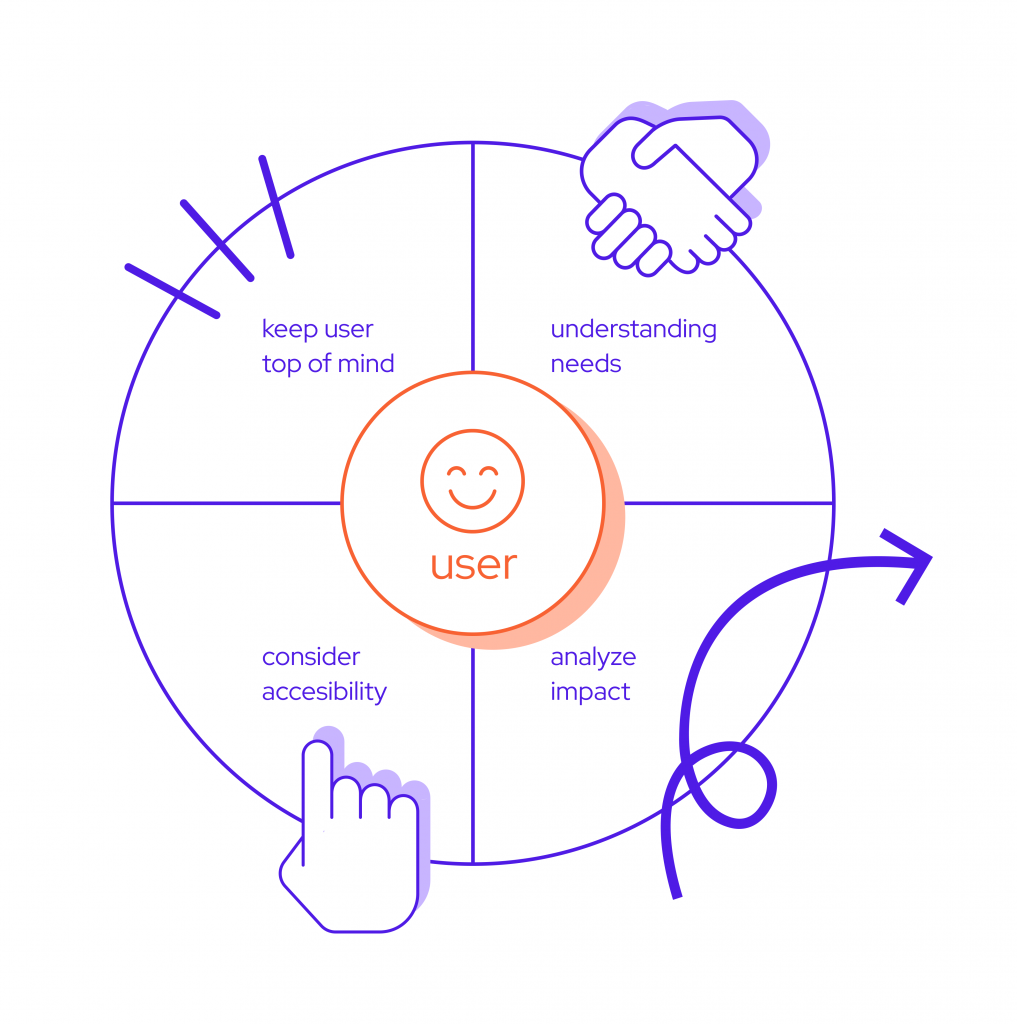
Understand end-user needs
A user-centric approach is a core tenet of design thinking and should be a guiding principle for any intranet design. In order to maximize the usefulness of intranets, we need to understand how employees are currently working, what is working well and what isn’t, and which areas of improvement would make the most significant impact.
Analyse the impact of user requirements
There may be user requirements or requests that emerge during user interviews that seem to exceed the scope or means of the project; alternatively, they might seem insignificant. Conducting an impact analysis on the list of user requirements that emerges during user research is key. By analyzing each requirement against its potential impact, we can channel resources towards the most meaningful design features and customisation.
Consider accessibility
Good intranet design will allow all users to work effectively. This includes people who may have accessibility requirements and/or use assistive technology. We make sure that the custom intranet design, both from a technological as well as an aesthetic standpoint, accounts for all users and their needs.
Keep the user top-of-mind
The user needs to be top-of-mind at all stages of the intranet development process. This means: gathering feedback during the discovery phase, developing user personas and journeys, auditing the content and tooling that users currently rely on, and continually requesting feedback from users on iterative designs.
Organizational readiness for custom intranet design and development
Making the advantages of intranets a reality requires a well-executed project. There are common practices that will serve organizations well as they prepare to design and build an intranet.
Decision-making and governance
- Establish a dedicated project team
- Identify decision-making dependencies
- Budget internal resources
- Secure external support
Internal alignment is a must for any intranet migration or launch project. At minimum, companies should designate a dedicated project lead or team who will spearhead the project and act as the point(s) of contact for internal stakeholders and external consultants. They should clarify the decision-making hierarchy and any key dependencies.
In this early preparation phase, organizations should also set an approximate budget and timeline. This will be a guide for engaging external resources as well.
Goal-setting
- Consider your mission, vision, and values
- Set goals that are in alignment with the needs of both the business and your employees
- Identify intranet KPIs and set up processes for monitoring
The project goals should be clearly defined at the outset of the custom intranet design process. It’s important to clarify the purpose of the project and understand what success looks like in the eyes of different stakeholders. How will the intranet project contribute to your company’s broader mission? How will it impact employee experience?
Clear goals will also provide guidance on how to measure progress and success. Without a desired outcome in mind, it’s difficult to determine KPIs or evaluate ROI at the project’s completion.
Stakeholder engagement
- Identify stakeholders
- Ensure management buy-in
- Lay foundational messaging with employees
Because the intranet impacts a wide array of users, strong stakeholder engagement is key. Without management buy-in, intranet development teams will be hard-pressed to make progress or to access the resources that they need, such as support from an external custom intranet development company.
Getting the right stakeholders on-side early in the process can be a powerful advantage. Even if management buy-in is slow or employees are resistant to change, individuals who are well-placed within an organization can champion the custom intranet design project and help push it forward.
End-users are among the most important stakeholders in custom intranet design and their input should not be overlooked. The best practice is to message upcoming changes carefully so that employees understand the target outcomes of the new tailor-made intranet.
Expectation management and maintenance
- Establish clear governance for content and technology
- Create tools and training
- Budget ongoing resources
- Plan for future audits
After launch, there will be some ongoing maintenance requirements. Ideally, the custom intranet development project will include preparation and planning for future governance. Responsibilities for technology maintenance and the content management system are particularly important.
Fresh information keeps users coming back to an intranet. Simple tools and clear training materials for intranet content managers will allow new contributors to add content.
As time goes on, more and more new custom features will also become available. It’s worthwhile to budget ongoing resources for intranet maintenance and to plan ahead for future audits and improvement initiatives.
Typical intranet design challenges
Despite awareness of intranet design best practices, there are typical difficulties many companies still face. Some challenges are inherent to the intranet design and development process and can be predicted – or at least prepared for. Others can be unexpected and are often context-dependent. Challenges don’t spell automatic failure for an intranet project, but teams should be aware of potential pitfalls.
One clear, proactive step that organizations can take to mitigate these challenges is to engage an external intranet development company like Frontkom. Hurdles like these are familiar to our experts, who have experience in overcoming these issues and can support intranet projects to stay on track.
Stakeholder management
As mentioned, stakeholder engagement can make or break an intranet (re-)launch. To make progress, teams need to get management buy-in, attract in-house decision-makers to champion the project, and build trust with end-users to encourage later adoption. All this is with the goal of having an intranet that is customized to their employees’ needs.
As external experts, we occupy a unique role and can help to manage challenging situations with stakeholders. This could be anything from interpreting difficult feedback to building a data-backed case for the value that a custom intranet will bring.
Legacy systems and new technology choices
There is a growing range of intranet software solutions available, not to mention the possibilities afforded by third-party integrations. Evaluating the various technologies and potential combinations can easily lead to choice paralysis. Plus, some companies may be stuck with legacy systems and face tricky choices about when and how to migrate to a new intranet.
Frontkom’s intranet solution architects and designers can narrow down the options, guiding your organisation to the most suitable solutions.
Limited resources
Budgetary constraints, staffing limitations, tight deadlines – all can derail or delay intranet projects. Smart choices about the distribution of resources can be the difference between a shelved project or a successful launch.
We encourage organizations to take a longer-term view and to consider the broader impact of investing in a custom intranet. Thanks to gains in productivity, efficiency, and employee satisfaction and retention, companies often recover their project costs quickly. Under-resourcing the intranet design project might cost more in the long run.
Collaboration with a custom intranet development company
Designing and implementing custom intranets takes expertise. That’s where Frontkom comes in.
Even at large companies, the intranet project team usually has a maximum of 35 people, and sometimes as few as 8-10 people. A small, agile team like this is able to work quickly. The drawback is that they might not have the depth of experience and skill needed, for example, in UX design or feature integrations. We provide the additional expertise, not to mention time and bandwidth, that propels intranet projects over the finish line.
An intranet development company can provide support across a range of areas. In 2021, this was the case for 100% of the NNG award-winning intranets, designed with the help of external experts. Our remit is most often centered around four core activities: choosing, designing, implementing, and optimizing.

Choosing the right combination of products
As we’ve seen, the customisation possibilities of intranets are broad-reaching – and continuously growing. When you choose not to go with a completely out-of-the-box solution, like SharePoint and Office 365, the selection of software products can become a challenging task. It’s often too complex for organisations to handle independently.
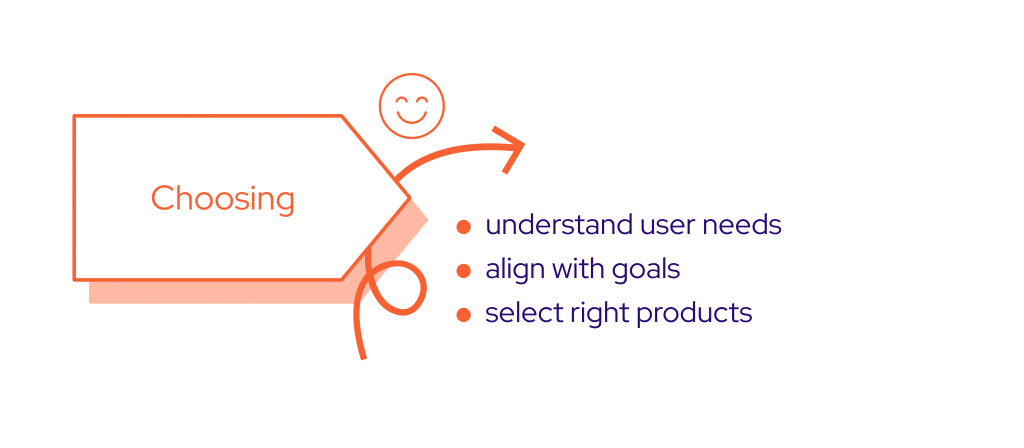
Our intranet developers and experts know the array of solutions and can make recommendations that are best suited for an organisation’s needs. Already at the initial product selection stage, collaborating with an outside intranet development company is time and money well spent.
The work of crafting a solution that will serve the organisation and its users begins with user research. The focus is on understanding the personas of the various user groups and their needs and priorities. We work cross-functionally and employ different user-research activities to drive the project ahead:
- facilitate workshops
- lead focus groups
- gather user feedback
- conduct user interviews
- conduct user testing
- map user journeys
- synthesise insights into project requirements
With this information in hand, the goals of the solution become more clear, as well as the customisation requirements and scope. For instance, since most intranet KPIs are targeted at adoption and engagement, understanding user needs will help us to focus on the intranet features that will provide the best user experience and meet those KPIs.
Designing and customising
Once the foundational framework, user research, and project requirements have been established, we utilise our expertise in UX design and engineering.

At this stage, our experts will:
- Set high-level principles for the intranet’s visual information hierarchy
- Establish a strong and clear visual language
- Create early visuals for various pages
- Design aspects of UX such as menu navigation and information taxonomy
On the engineering side, our intranet developers assist with customization preparation, especially to:
- Gather technical requirements
- Make implementation recommendations
Along the way, testing core hypotheses about the intranet design will help ensure that the project stays on track. We use wireframes and user testing of early prototypes to confirm that the designs are achieving the right results.
Implementing the solution
For either intranet migrations or redesign projects, solid technical expertise is a must. At Frontkom, we handle the complicated processes of development, implementation, and intranet migration to ensure a smooth launch.

Details of the UX design can be added once the back-end infrastructure has been set. Minor customisations, especially those that are personalised based on roles or user groups, are best made when user testing is already underway.
Optimising post-launch
As a user-focused tool, the measure of a successful intranet (re)design is its user adoption. Clear feedback frameworks and ongoing user testing help to confirm that requirements were correctly identified and the project has achieved its goals. Technical adjustments may be needed post-launch, which we can also handle.
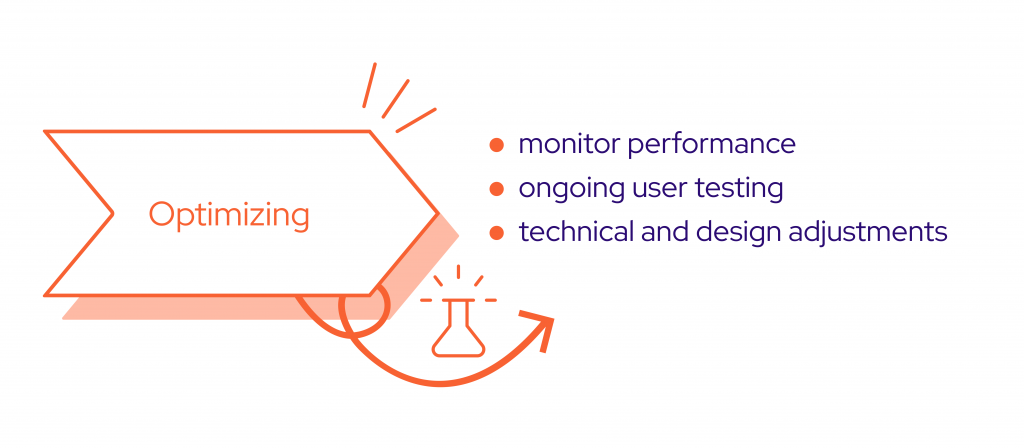
However organisations choose to measure the ROI of their custom intranet, the positive results are usually obvious. Many companies report convincing qualitative feedback from employees and see excellent developments in their intranet KPIs, e.g. average daily visitors, content views, or reactions. Ongoing monitoring of these metrics and other business KPIs can signal if adjustments are needed or prove the value of further investments in the intranet down the line.
Intranets for companies – and their employees
Clearly, the advantages of a dedicated intranet in an organisation are not limited to safety and security anymore.
Tailor-made intranets can provide engaging digital workplaces and offer real employee benefits. Intranets have evolved with the times. Today, they are a viable extension of an organisation’s operational ecosystem. With a well-designed intranet, companies can offer their employees an enhanced working experience that enables efficiency, engagement, and connection.




